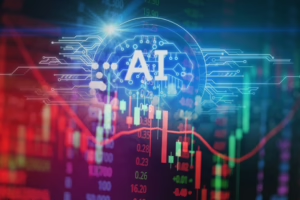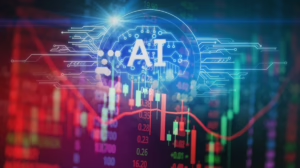The AI Revolution: Transforming Technology and Life Across the Globe
Introduction
The digital landscape is undergoing an unprecedented transformation, primarily driven by artificial intelligence (AI) and machine learning (ML). These technologies are not just buzzwords; they are the backbone of innovations that promise to revolutionize various sectors and enhance our daily lives. From video editing to animation and beyond, AI is reshaping how we interact with technology. This article will explore various aspects of the AI revolution, focusing on AI video editing and animation, and how companies like OpenAI are leading the charge in this new era of technology.
The Foundations of AI and Machine Learning
What is AI?
Artificial Intelligence refers to the simulation of human intelligence in machines programmed to think and learn. These systems can perform tasks usually requiring human intelligence, such as understanding natural language, recognizing patterns, and making decisions.
What is Machine Learning?
Machine Learning is a subset of AI that empowers machines to learn from data and experience. Instead of being explicitly programmed to perform a task, ML algorithms identify patterns within data, helping the system improve its performance over time. Techniques like supervised learning, unsupervised learning, and reinforcement learning form the backbone of ML methodologies.
The Role of Big Data
The effectiveness of AI and ML is heavily reliant on the quality and quantity of data. The phenomenon known as "big data" enables these systems to analyze vast datasets, gaining insights that were previously impossible. The interplay between big data and machine learning is crucial for applications ranging from healthcare to finance, and significantly impacts sectors like video editing and animation.
The AI Revolution in Video Editing
Traditional vs. AI-Driven Editing
In the realm of video production, traditional editing is labor-intensive and often requires skilled professionals to ensure high-quality output. This involves hours of footage being sifted through, numerous adjustments being made, and time-consuming tweaks to achieve the desired effect.
Conversely, AI-driven video editing leverages advanced algorithms and machine learning to automate many of these processes. The advantages include reduced editing time, lower costs, and enhanced creative possibilities. AI tools can analyze footage, identify key moments, and even suggest edits based on best practices.
Noteworthy AI Video Editing Tools
-
Runway ML:
Runway ML is a revolutionary tool that allows creators to use machine learning in their video editing workflows. It provides features like real-time collaboration, cloud-based editing, and AI-generated effects, making it indispensable for modern video projects. -
Adobe Premiere Pro with Sensei:
Adobe has integrated its AI engine, Sensei, into Premiere Pro, facilitating several game-changing features like automatic scene detection and smart reframing. This helps editors save time while maintaining a high level of creativity. - Magisto:
This AI-driven video editing platform enables users to create professional-looking videos in minutes. By analyzing footage, Magisto can recommend styles, music, and other elements, revolutionizing the video creation process for non-technical users.
Future Prospects in Video Editing
As AI continues to evolve, the future of video editing looks incredibly promising. Advances in natural language processing (NLP) may allow editors to describe what they want in simple terms, and AI could generate edits and effects that align with those requests. Moreover, the potential for real-time collaboration across geographies will change how teams work on video projects.
AI in Animation
The Animation Pipeline
Traditionally, animation is a complex, multi-step process that requires a significant amount of time and skill. It involves stages like storyboarding, character design, rigging, animation, and post-production. Each stage demands expert knowledge and creativity, often resulting in lengthy production times.
AI’s Role in Modern Animation
AI has the potential to simplify and accelerate the animation process. From automating in-between frames to generating character movements based on predefined parameters, AI can significantly enhance both efficiency and creativity in animation studios.
-
Deep Learning for Animation:
Advances in deep learning algorithms can enable machines to learn from existing animations and generate new animations autonomously. Techniques like Generative Adversarial Networks (GANs) are being explored for creating unique animation styles and characters. - AI-Assisted Tools:
Tools like Adobe Character Animator leverage machine learning to automate facial animations based on a user’s expressions. This dramatically reduces the time needed for animators to create lifelike characters.
AI in Script and Story Development
Beyond animation itself, AI can analyze scripts to determine what elements make a story engaging, helping creators write compelling narratives. With machine learning models trained on successful screenplays, writers can receive insightful feedback that leads to better storytelling.
OpenAI and the Future of AI in Creative Industries
OpenAI: A Leader in AI Innovation
OpenAI has become a cornerstone in AI research, contributing algorithms and models that push the boundaries of what is possible with machine learning. Tools such as GPT-3 and DALL-E exemplify the organization’s capabilities, showcasing how AI can facilitate creative processes in writing and art.
The Impact of OpenAI’s Tools
-
Content Creation:
OpenAI’s models have been used for generating scripts, taglines, and even entire narratives, making it invaluable for writers, marketers, and content creators. These tools streamline the initial phases of content generation, allowing humans to focus on higher-level creative tasks. - Visual Storytelling:
DALL-E, an image generation model, can produce unique artworks and illustrations from textual descriptions. This ability enables visual creators to experiment with ideas and concepts that may not have been feasible through traditional methods.
Ethical Considerations
While AI offers countless advantages, ethical concerns are increasingly prevalent. Questions about authorship, intellectual property, and the potential for bias in AI-generated content are critical topics that require ongoing discourse. Ensuring that AI technologies are used responsibly will be a significant challenge for the future.
The Broader Impact of AI on Future Technologies
AI in Healthcare
The healthcare sector is witnessing transformative changes due to AI and machine learning. Predictive analytics can forecast patient outcomes, while robotic surgery has made procedures less invasive and more precise. AI-powered diagnostics can improve the accuracy of disease detection, leading to better patient care.
AI in Finance
AI and machine learning have also revolutionized financial services. Algorithms can identify fraudulent transactions in real time, assess credit risk, and even guide investment strategies by analyzing market trends. This level of automation and insight is changing how financial institutions operate.
AI in Retail and E-commerce
In retail, AI enhances personalized shopping experiences by analyzing customer behavior and preferences. E-commerce platforms are using chatbots for customer service, AI-driven recommendation systems to suggest products, and supply chain optimizations to improve logistics.
The Future: Challenges and Opportunities
Skills Gap and Education
As AI continues to integrate into various sectors, there is a growing need for skilled personnel who can work with these technologies. Educational institutions and training programs must adapt curricula to prepare future professionals for careers in AI, machine learning, and allied fields.
Employment Concerns
While AI promises efficiency and innovation, it raises concerns about job displacement. Routine jobs may be automated, leading to a paradigm shift in employment sectors. However, this also opens new avenues for employment in areas such as AI ethics, analytics, and development.
The Role of Policy and Regulation
Governments and regulatory bodies will need to establish frameworks to govern the use of AI ethically and responsibly. Policies should include guidelines for data privacy, consumer protection, and bias mitigation to ensure AI technologies serve the public interest.
Conclusion
The AI revolution is not merely a technological upgrade; it signifies a cultural and societal shift. As we witness the extraordinary impact of AI on video editing, animation, and various other fields, the opportunities for innovation are limitless. Companies like OpenAI are at the forefront of this charge, pushing the boundaries of possibility. While challenges remain in terms of ethics and employment, the potential benefits of AI are undeniable. Embracing this transformative era will require adaptation, responsibility, and creativity as we forge a new path in the ever-evolving landscape of technology.
References
- Modern Footnote: "The Future of Video Editing: AI Tools and Techniques"
- Modern Footnote: "OpenAI and the Creative Industry: A New Paradigm"
- Modern Footnote: "AI and the Transformation of Animation"
- Modern Footnote: "The Role of AI in Modern Healthcare"
- Modern Footnote: "AI Innovations in Finance"
- Modern Footnote: "Ethics in AI: A Growing Concern"
This article outlines the profound changes that AI and machine learning are bringing to various sectors, particularly in creative fields such as video editing and animation, while also emphasizing the need for responsible and ethical application of these transformative tools.
Click here and see the Source

























Add Comment